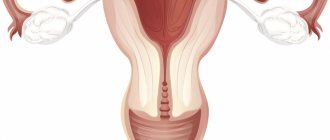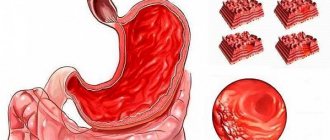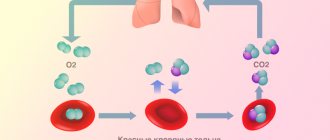The urethra is a canal in both men and women that is used to remove urine and semen (in men). Discharge from the urethra is physiological in nature, since it involves the natural release of biological fluid. However, there are a number of pathological conditions in which discharge from the canal is not natural and warns of the presence of inflammatory processes in the genitourinary system.
It is quite easy to distinguish the former from the symptoms of the disease: they are not accompanied by unpleasant sensations, do not have bloody or purulent impurities and do not smell. In contrast, an atypical secretion may have various impurities, including blood, have a cheesy consistency, and have an unpleasant smell. They require immediate professional medical help. You can get it at the CELT multidisciplinary clinic: our specialists will make every effort to correctly diagnose and prescribe appropriate treatment. They have everything they need to make it successful: patients only need to contact us in a timely manner to avoid the development of serious complications.
At CELT you can get advice from a gynecologist.
- Initial consultation – 3,000
- Repeated consultation – 2,000
Make an appointment
Necessary examination for discharge in men
In case of strange discharge, the patient should consult a urologist. The doctor carries out diagnostics according to a certain algorithm.
It includes:
- Visual inspection of the penis, head of the penis, perineum, foreskin. The urologist will see whether there are deformities, injuries, signs of inflammation, various rashes, etc.
- Palpation of the lymph nodes in the groin. The doctor determines their size, whether they are hot or not, mobile or in tight contact with the skin, soft or dense. It also matters whether there are different expressions nearby.
- Palpation of the prostate. With pathology of the organ, the lobes increase. This can be determined by massaging through the rectum. If there is a cancerous tumor, then the growths are uneven. Discharge – blood with clots from the urethra.
Instrumental studies are also needed, such as ultrasound of the pelvic organs, urography and computed tomography. They allow you to clarify the diagnosis. Diagnosis is always carried out in a complex manner, since it is impossible to recognize the exact causes of the disease on the basis of one test.
Diagnostics
The treatment methods that the doctor prescribes will be dictated by the origin of the disease. This is why competent, professional and accurate diagnosis is so important.
A comprehensive examination by a urologist/sexologist includes:
- Inspection (palpation);
- Hardware diagnostics: ultrasound of the prostate gland;
- Ultrasound of the bladder;
- Doppler examination of blood vessels (Dopplerography) - according to indications;
If the doctor deems it necessary, the following may also be prescribed:
- Additional laboratory tests (blood tests, urine tests, prostate secretions, spermogram);
- Computed tomography (CT);
- Needle biopsy;
- X-ray;
- Scintigraphy;
- Urethroscopy;
- Cystoscopy.
Discharge in men due to sexually transmitted infections
Sexual infections most often cause the appearance of atypical discharge from the urethra in men. Sexually transmitted infections are a group of diseases that are most often transmitted through sexual contact. Less commonly - through blood, through everyday contact or during childbirth. All sexually transmitted infections have both similar symptoms and some differences.
They are most often accompanied by discharge from the urethra (sometimes yellow, green, cheesy, foul-smelling), and are also characterized by burning and itching, pain during urination and during sexual intercourse. Sometimes a skin rash and other skin disorders appear.
The allocations are:
- Chronic chlamydia, uraplasmosis, mycoplasmosis (transparent, viscous discharge of moderate amounts). The number of leukocytes in the blood is increased on microscopic examination.
- Acute course of chlamydia, uraplasmosis, mycoplasmosis (white or translucent discharge of mucopurulent consistency). With chlamydia, a purulent substance accumulates on the head of the penis.
- Gonorrhea is characterized by a putrid smell of discharge. They have a thick, sticky consistency, yellow to yellow-green in color. Microscopic examination shows many leukocytes, epithelial cells from the urethra. In addition, itching, burning, and pain when urinating are added.
Often sexually transmitted diseases occur in one patient in combination. This could be gonorrhea along with chlamydia and gonorrhea, or syphilis and gonorrhea along with mycoplasmosis. Any combinations are possible. Therefore, the nature of the discharge can be very different.
Urogenital candidiasis (thrush) is not classified as venereal, since it rarely passes from a sick woman to a man. More often this is a consequence of decreased immunity and injury to the genitourinary system. With this disease, the discharge has a sour odor and a cheesy consistency. They also cause itching and burning when urinating.
When does discharge indicate the onset of the disease?
Despite the fact that doctors never tire of repeating that you should contact a gynecologist or proctologist immediately after discovering the first signs of a deviation from the norm, people usually wait until purulent clots begin to bother them.
Typically, the presented picture is additionally accompanied by burning and itching, which indicates damage to the urinary tract by an infectious pathogen. In women, this clinical picture indicates the onset of an inflammatory process in organs located in the pelvis.
The secretion may even contain an admixture of blood.
The color will vary from yellow-green to gray, accompanied by thick clumps with a stretchy consistency. Another sign of the onset of pathology is pain in the lower abdomen.
It will not be possible to cope with the disease on your own, if only simply because it is impossible to establish an accurate diagnosis during an external examination. You should make an appointment with a specialized specialist so that he can issue referrals for testing. Only with the totality of the results of diagnosis, examination, taking into account the victim’s complaints and the presence of concomitant chronic diseases, hereditary predisposition, will it be possible to understand the intricacies of the diagnosis.
Other common primary sources of damage include:
- neoplasms;
- urethritis;
- “newlyweds” disease.
When it comes to sexually transmitted diseases, women have to deal with a burning sensation in the vagina, and men have to deal with an identical sensation in the urethra. Representatives of both sexes will experience some difficulty while urinating. Often the burning sensation is accompanied by the release of a white secretion.
At advanced stages of the pathology, suspicious impurities appear in the urine, including milky flakes. Urine also changes its natural odor. Women may experience menstrual irregularities, and men may have difficulty getting an erection.
The fact that the patient is faced with a possible neoplasm in the early phase of development is indicated not only by a burning sensation. Classic symptoms are accompanied by brown discharge. Almost the same thing happens if the bladder is accidentally injured. But only an experienced specialist can make an accurate diagnosis after studying the results of laboratory tests.
Another common disease with characteristic symptoms is called urethritis. It is often confused with the traditional inflammation of the bladder, cystitis. In fact, urethritis is an inflammation of the mucous membrane of the walls of the urethra, and not the bladder in general. This kind of deviation is accompanied by transparent, non-viscous discharge, which may occasionally have a cheesy sediment.
A relatively safe scenario can only be called the “newlyweds” disease. It provides a mucous secretion from both sexual partners who lead an overly active sex life. No specific treatment is needed here. Just taking a short break is enough. Abstinence will help adjust the body to the desired mood without the use of medications.
Which doctor deals with men's discharge?
All diseases in men that are accompanied by discharge from the urethra are dealt with by a urologist. A urologist is a specialized specialist who is responsible for the diagnosis and treatment of pathologies of the genitourinary system.
The urologist at our clinic has extensive experience, constantly improves the level of his knowledge, and takes part in practical and educational seminars.
Men of all ages turn to him for help, starting from birth. All services are certified.
Answers to frequently asked questions:
- How to prepare for an appointment with a urologist?
- How to get tested for urological diseases?
- What tests can be done by a urologist?
- What diseases does a urologist treat?
- What symptoms should you consult a urologist for?
- What diagnostics can a urologist perform in your clinic?
- How to call a urologist at home?
- What urological equipment does your clinic have?
- Urological care in the clinic
- Urological care at home
- How to make an appointment with a urologist at the clinic?
Associated symptoms
In the presence of diseases that are characterized by white discharge, their symptoms may have a pronounced clinical picture.
Diseases may be accompanied by itching, burning during sexual intercourse or urination (candidiasis, ureaplasmosis, mycoplasmosis, trichomoniasis), impaired urination (prostatitis), and decreased erectile function.
Sometimes symptoms do not always appear, which contributes to later detection of the disease (chlamydia).
In any case, it is necessary to conduct an examination if white discharge:
abundant;- quite scarce, but appear regularly;
- accompanied by pain, burning, itching or other symptoms;
- general weakness appears;
- an unpleasant or specific odor appears;
- the color of secretion changes;
- urinary problems occur;
- Erectile function decreases.
Signs of diseases may not always appear immediately, or may not have a pronounced manifestation at all, so preventive measures should be carried out regularly (at least once a year) to detect a possible disease.
Video: “White coating on the penis”
Where to go for discharge in men
For many years, our clinic has been providing medical care to men with diseases accompanied by urethral discharge.
Why people often choose us:
- our clinic is open every day of the week;
- we have branches, so we provide the service to everyone quickly and at a convenient time, there are no queues;
- our medical staff works as a single team, so patients receive comprehensive care and guaranteed results;
- the professionalism of urologists allows a man to be restored to health in a matter of days using advanced treatment methods;
- we use only the best consumables and medicines;
- We provide services at home along with the collection of biomaterials for analysis;
- We maintain medical confidentiality.
In addition, all necessary tests can be performed at our clinic. It’s fast, comfortable, and most importantly – accurate results. The success of treatment largely depends on a correct diagnosis.
Psychogenic cystitis
Sometimes it happens that there is no objective physiological reason, but the disease exists.
If tests and studies confirm the absence of any infections, protozoa and fungi, there are no anatomical or physiological provoking features, but symptoms are still present, then we can talk about psychogenic cystitis. This may be a kind of psychosomatic reaction of the body to stress and other negative factors. In this case, treatment should be done not by a urologist, but by a psychotherapist. It can take quite a long time and require taking antidepressants, relaxants and numerous psychotherapeutic sessions [1].
Treatment of discharge in men
Treatment directly depends on the identified pathogen or the cause of such a symptom and the degree of damage to the body:
- Candidiasis is treated with an antifungal cream, applied to the affected areas of the skin if there are no other symptoms other than discharge and redness of the head of the penis. The most commonly used cream is Clotrimazole. If the disease progresses, then treatment is complex. Oral medications are added.
- Ureaplasmosis requires taking antibiotics according to an individual regimen. The average course is 10 days. After a course of antibiotics, treatment to restore intestinal microflora is recommended.
- Chlamydia is also treated with antibiotics (tetracycline, fluoroquinols, macrolides), and in the chronic form this treatment is long-term.
- Mycoplasma is caused by a single-celled parasite. It is destroyed by erythromycin, doxycycline, tetracycline.
Antibiotics are most often used in therapy. The selection of drugs and dose is determined by the doctor. If you consult a doctor in a timely manner, treatment takes on average no more than 10 days. In the case of chronic diseases, therapy requires a longer period.
How is diagnosis carried out and treatment prescribed?
To identify the original source of the problem, as well as prescribe the most effective treatment regimen, you first need to make an appointment with a doctor. During the initial examination, the doctor will conduct a simple questionnaire to find out how long ago the dangerous signs began to appear.
To understand the cause, urethroscopy is additionally used. This is the name for instrumental diagnostics, which is performed using a cystoscope. It is inserted into the urethra to obtain more complete information about the current state of the organ.
Next, the victim is sent for laboratory testing, which requires taking a smear to further study the composition of the microflora for infectious pathogens and cytological analysis. After receiving the results, it is possible to select adequate treatment.
Further therapy depends entirely on what caused the deviation. But in most cases, all treatment formats include the use of antibiotics. Prescribing them to yourself is strictly prohibited, since uncontrolled use of such strong medications will certainly result in kidney dysfunction.
Among alternative therapies, preference should be given to sitz baths, which will help eliminate irritation. The use of auxiliary techniques is allowed only after approval by the doctor. He will tell you which solutions are best to add to the bath.
Usually these are anti-inflammatory, antiseptic pharmaceutical products, as well as decoctions of medicinal herbs. Tampons are often impregnated with them. It would be useful to use local suppositories. Doctors call physiotherapy, which includes a course of electrophoresis, an equally effective approach.
Prevention of discharge in men
There are no vaccinations or lasting immunity against diseases that cause pathological discharge from the urethra. Once you get sick, you can get the disease again. There is also a risk of the disease becoming chronic, which occurs with regular relapses. To maintain health, there is only one way out - compliance with preventive measures.
These include:
- protection from casual relationships, using a condom, which protects 98% from sexually transmitted infections;
- regular sex life with a trusted partner;
- compliance with personal hygiene standards - daily washing of the penis while retracting the foreskin, changing underwear daily;
- do not overcool;
- treat colds and other infectious diseases in a timely manner;
- regularly visit a doctor for a preventive examination, since some diseases can hardly be detected for a long time, becoming chronic, leading to irreversible changes;
- do not abuse alcohol.
To these measures you can add strengthening the immune system in all ways - hardening, gymnastics, proper nutrition, giving up bad habits, a positive attitude and the absence of prolonged stress.
Features of discharge during pregnancy and in babies
As in ordinary patients, discharge in pregnant women is classified into physiological and pathological. After successful conception, the fetus begins to grow, simultaneously causing compression and a constant harsh impact on the bladder. This explains why pregnant women have a more frequent urge to urinate when they find traces of several shades on their underwear:
- yellow;
- brown;
- orange.
All of the above is a consequence of increased urine concentration in a compressed bladder. Hormonal changes in the body add to the complexity. But if this does not bring any unpleasant sensations or is not accompanied by health-threatening symptoms, then everything is fine.
But as soon as pain, pain, discoloration with a white tint, pus, unpleasant odor, bloody clots are added to the relatively natural list of phenomena, then it is worth informing your doctor about this. It is likely that the expectant mother is faced with urethritis or an infectious process, which poses a danger to the fetus.
Considering the most common diseases among children, which cause a typical response of the body with an abundance of secretions, doctors bring to the fore inflammation of the kidneys and bladder. Moreover, the complaints of boys will differ from those of girls, which is explained by their physiological characteristics.
The former experience pain, as well as:
- burning during bowel movements;
- blood in the urine;
- itching all over the genitals.
Girls have to deal with pain localized in the lower abdomen, frequent urge to go to the toilet, and blood streaks. At an advanced stage, as during pregnancy, purulent inclusions are possible.










